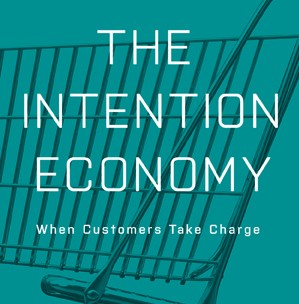Publisher: Harvard Business Review Press
Book Review by: Sonu Chandiram
This is a pioneering book in the world of business. It is a book wherein the author Doc Searls – described by New York Thomas columnist Thomas L. Friedman as “one of the most respected technology writers in America” – presents the may new ways in which customers have begun to control what information they give to and receive from companies and are transforming the relationship between the two entities.
This is a book about customers taking charge, and vendors losing power over them. Marketers have for decades, been looking for more and more ways to “get personal” with customers so that they can sell more products than ever before and at the same time sell those products more frequently.
Marketing departments have been trying for ages to endear customers, not only for them to sell products and services, but also to promote them to their family and friends. This is done by gathering more and more data about their customers and customer communities.
How is it that for example, young men in their late teens receive free shaving razors and blades? The companies want these young men to try these razors and blades, enjoy the experience and the results, and “get hooked” to the products. And, if possible, to spread the (hopefully) good word about these products to their friends.
But a revolution has been taking place in markets wherein consumers now control the type, amount and flow of data about themselves, the author points out. He writes that soon, consumers will be able to:
- Control the flow and use of personal data
- Build their own loyalty programs
- Dictate their own terms of service.
- Tell whole markets what they want, how they want it, where and when they should be able to get it and how much it should cost.
When customers take charge, they will be able to have demand drive supply rather than the other way around, the author points out. And he explains that customers’ demand will be able to drive supply “far more directly, efficiently and compellingly than ever before.”
We all have heard of CRM or customer relationship management in customer service departments that ensure that customers are satisfied and happy and remain loyal to the company.
Well, have you heard of VRM or vendor relationship management by which customers will have vendors respond to intentions of groups of customers instead of “vying for the attention of many?”
As customers become more in control and drive their wants and needs into the marketplace, what will emerge is the Intention Economy, the author declares. To some extent this is already a reality.
He warns marketers that in the Intention Economy, “only vendors and organizations that are ready for the change will survive, and thrive.” And he asks company executives point blank: “where do you stand?”
A 302-page book organized neatly in four parts, Doc Searls starts by advising business managers on the importance of “paying attention to intention” in his Prologue and discusses why “free markets require free customers in his Introduction.
Part I is helpful in showing marketers how to achieve “customer captivity,” and predicts the declining value of advertising because it is basically a one-way message with no interaction.
Part II emphasizes the fact that consumers – who now promote and advocate products that they’ve had good experiences with – now live in an increasingly “networked marketplace” with social media having made interaction and communication increasingly easy.
Part III shows us the scope of the “liberated customer” who now has immense freedom of choice, and is discarding the intentions of vendors who have been trying to make customers captives of their products and services.
Part IV exposes the dilemma faced by the liberated vendor between leading the dance (a former attitude now wearing away) and following the customer’s lead in the emerging “customers-in-control” Intention Economy.
This book breaks a lot of new ground and we urge all those responsible for, or involved in revenue and profit growth, customer happiness and retention, to buy and read it. It is an excellent work by a pioneering writer in the area of company-customer relationships.







